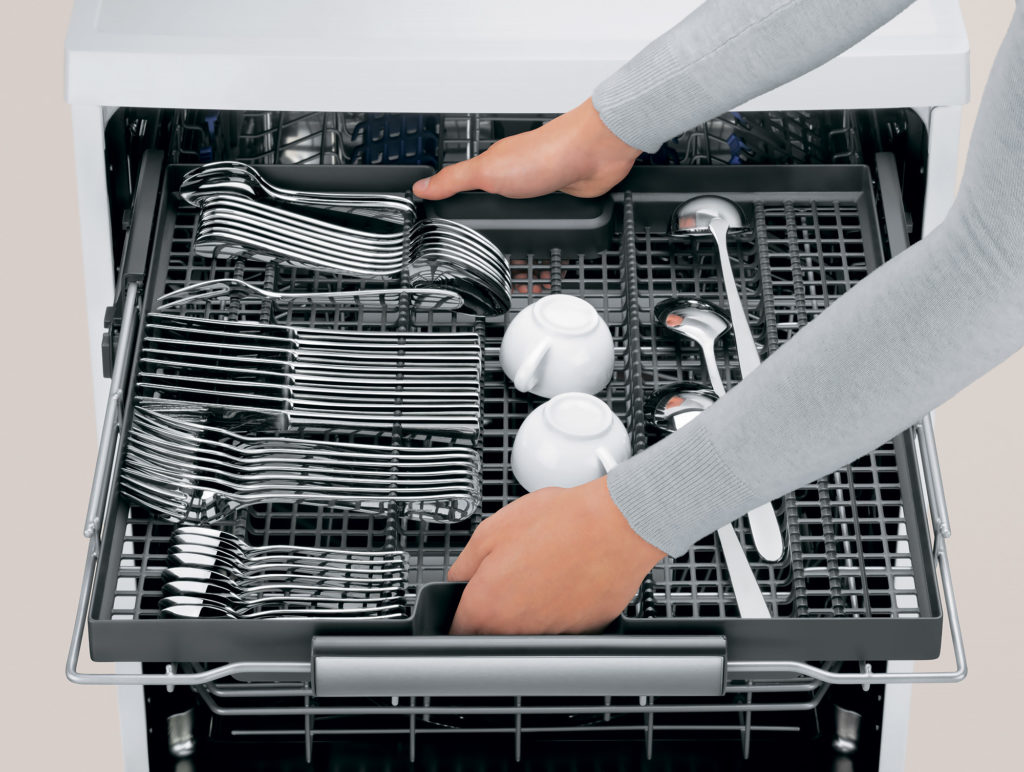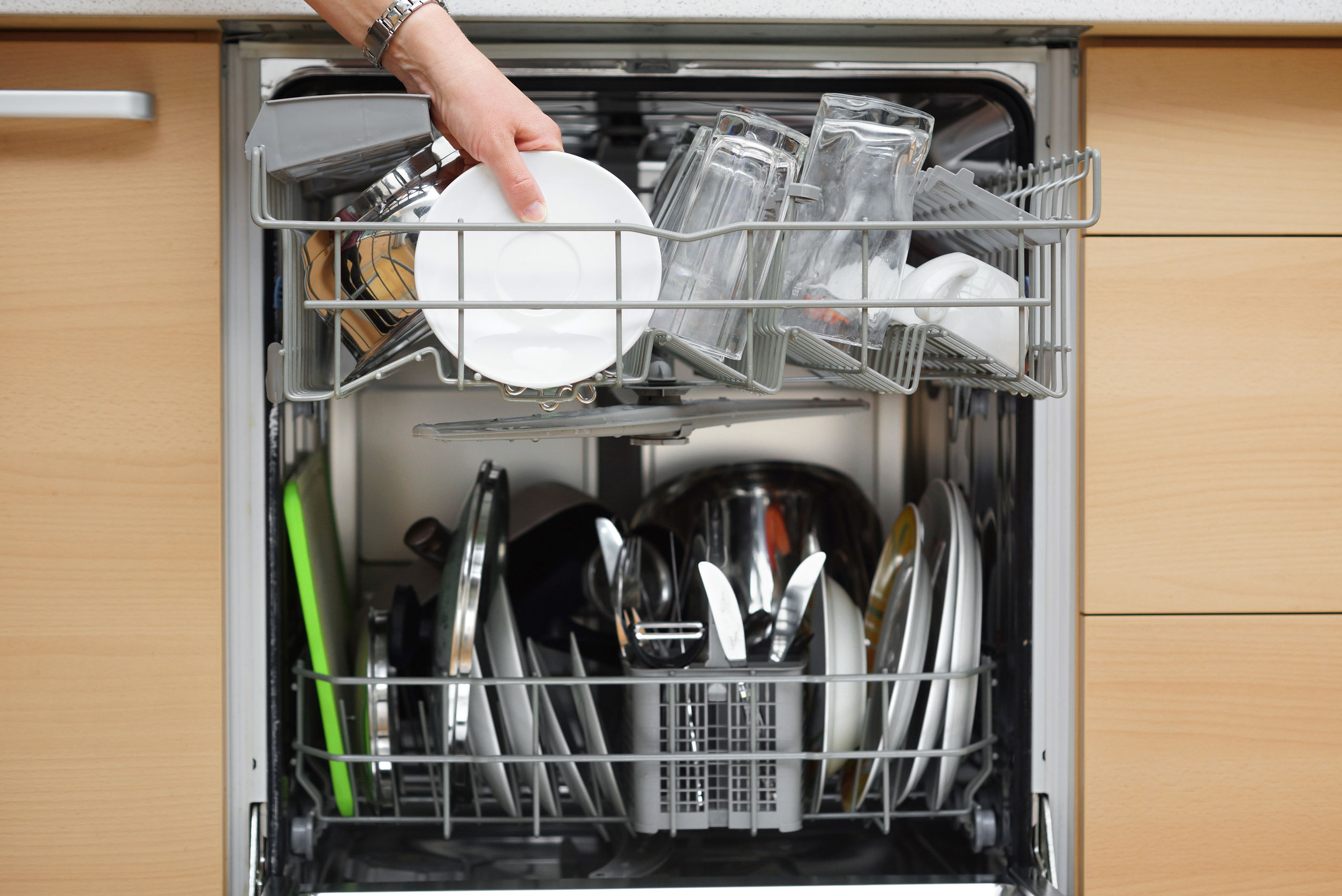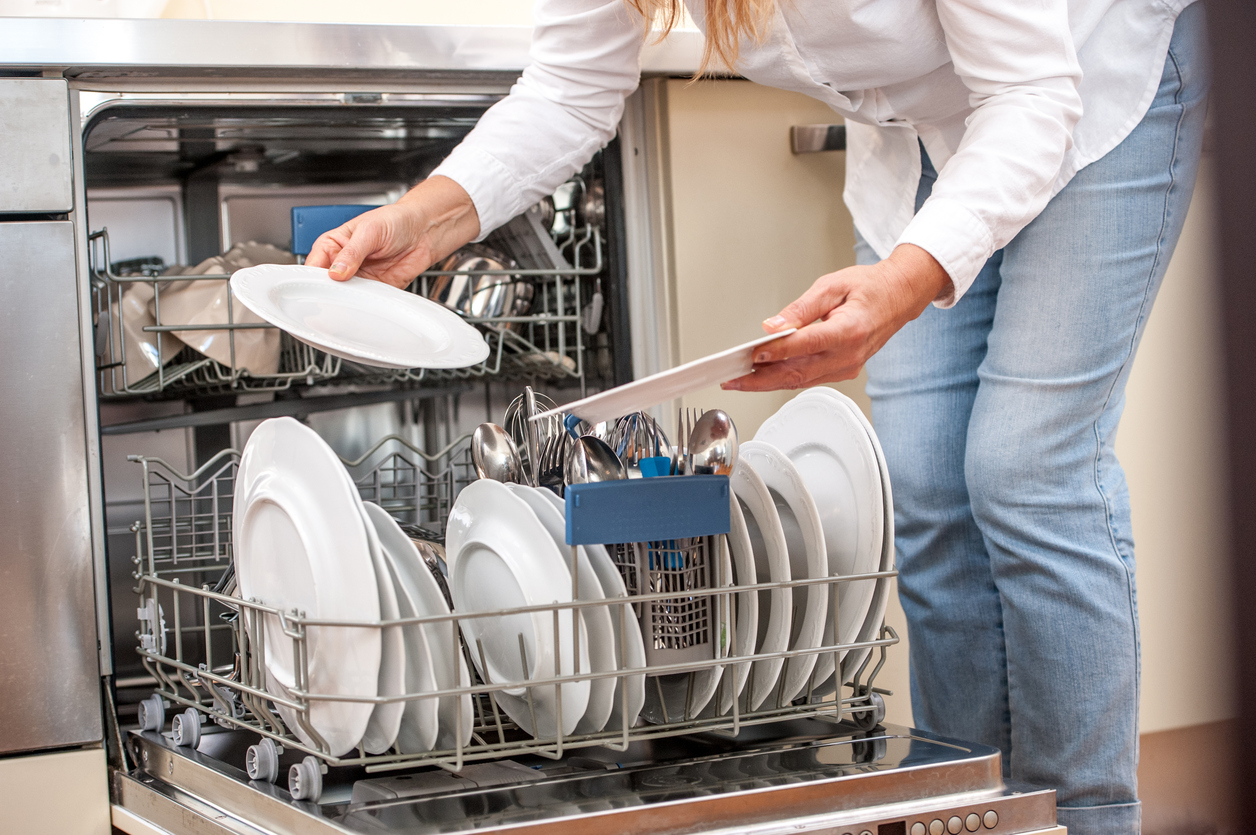How to use a dishwasher
Washing dishes with your own hands does not attract many; in this case, a device such as a dishwasher comes to the rescue. The cleanliness of the plates and cutlery depends both on the firm and on how the mechanism is used. Consider the instructions for using the dishwasher.

How to use the machine correctly
In order to avoid breakdowns and problems with cleaning, you need to study the features of the first start, loading and unloading dishes and some modes.

Idle start
The main requirement for proper dishwasher operation from manufacturers is the first start-up of the dishwasher. Its essence lies in the fact that dishes are not loaded into the device. This is to remove any debris or grease that may settle during washing.

Idle start allows you to understand the temperature, processing rate, duration and some other nuances. For example, during installation, there may be problems with hoses and wires, which in some cases leads to leaks and breakdowns.
Idle start rules:
- Select a mode.
- Observe the process so that there are no leaks.
- When finished, wait for the device to cool down. It's about 15 minutes.
Now you can start loading the dishes.

Key combinations and descriptions of modes can be found in the instructions that come with the kit. When the keys are pressed correctly, closing the door will automatically start the dishwasher.
First turn on
How to turn on the dishwasher and set up its operation, you can see in the instructions, where the manufacturer accurately painted all the nuances.
After an idle start, you can load the dishes. To do this, lay it out on a special wire shelf or other provided supplies in accordance with the instructions. Select the required mode, depending on the type and dirtiness of the products.

At the end, carefully check the dishes: there should be no traces of food or soap on them. In the event that such problems arise, it means that the mode was selected incorrectly or there are problems with the device itself. If the matter is in the mode, then it is worth increasing the duration of the flushing.
When white stains are visible on the dishes, this means that the rinse aid has been selected incorrectly or there is too much of it.
How to load dishes
In order for all cutlery, plates, pots and pans to be thoroughly washed, you need to correctly figure out how to load the dishes into the dishwasher. It should stand so that the water has free access even to the most inaccessible places, and then it can drain down.
There is a special plan in the instructions to help you figure out the placement.Usually the lower sector is for the most dirty household items, and the upper one for delicate cleaning. It is recommended to rinse fragile glasses with a special gentle regime and put them on the upper shelves.

Large-sized items must be positioned so that the rocker arms, which are designed to spray water, are not damaged. To do this, you need to remove one of the sectors. For example, the manufacturer Bosch (Bosch) provides such an opportunity.
Note! Fragile objects made of plastic or glass should not be placed in the lower part, as there is a higher temperature and more aggressive processing.

How to unload properly
After the dishwasher has finished its work, you need to get the dishes. To do this, you need to wait for the device to cool completely - about 10-15 minutes. This is necessary in order not to burn yourself, as the temperature inside the machine is quite high.

In addition, the increased temperature makes porcelain and glassware more sensitive to mechanical stress. You need to start loading from the bottom so that no drops drip from above.
Choosing the right mode
In order to thoroughly wash the dishes and not damage them in the process, you need to choose the right mode. Let's take a look at the functions of the dishwasher.
Soak
One of the modes is "soaking". It is used for dishes with dried food: pans, burnt pots. The dishwasher soaks household items and helps remove food debris.
It is recommended that before loading the dishes, pre-rinse them under running water. This will simplify the process and make it even more efficient.

Intensive wash
This is another mode that washes even the dirtiest dishes. It includes two stages:
- Pre-wash.
- Main wash.

In intensive mode, the water heats up to 70 degrees, and sometimes even up to 90. It should be borne in mind that in this case a lot of water and electricity is spent, which does not allow using it too often for washing dishes.
Standard Mode
On many devices, you can find another name - normal or conventional sink. Used for general cleaning with medium soiling. For example, fresh pots and plates. Cleaning is carried out at a temperature of about 60 degrees with a duration of an hour to two hours.

Economical car wash
This mode allows you not only to effectively clean the dishes, but also saves water and energy, it is also sometimes called Electrolux (electrolux). This is a significant plus, since many people are afraid that this device wastes too many resources, which is why they refrain from buying.

Cleaning is carried out at a temperature of 50 degrees. Sometimes on the dishwasher panel you can find such a mode as partial load. It also saves resources and time, but it does not always effectively clean up dirt.
Quick wash
This mode saves all housewives during home holidays and celebrations, when a lot of slightly dirty dishes accumulate and you need to get rid of it quickly, but there is no time for hand washing.

This type of cleaning will not remove dirt from dried pans or burnt pots, but it will do a great job of cleaning dishes and cutlery. The water heats up to about 50 degrees.
Delicate wash
This mode is intended for glass, porcelain, crystal devices that require extra careful handling. These materials do not withstand high temperatures, so the dishwasher maintains about 40 degrees.

Important! Strong contamination cannot be eliminated at this temperature, so you will have to wash it yourself.
Therefore, it is recommended to separate the dishes by type and material when loading. You need to unload washed household items as carefully as possible, since heat treatment makes them even more fragile.
What cannot be washed in a typewriter
There are some household items that cannot be washed in the dishwasher because they are not designed for high humidity or are too fragile. Let's take a closer look.
Wood
In the kitchen of every housewife there are wooden objects: boards, rolling pins, shovels and spoons. Wood is very sensitive to high humidity, begins to rot and exfoliate. If you soak a wooden spoon for an hour or two in water, then you can throw it away.
Even after the product is dry, it will not return to its normal condition. The deformation is irreversible - cracks and roughness appear. Even with a quick wash in the washing machine, the wood will be permanently damaged. Therefore, wooden items cannot be washed in a dishwasher, even in cold water for half an hour.

Plastic
This rule has its exceptions. Only high temperature resistant plastic can be washed in the dishwasher. We are not talking about disposable dishes, they cannot be cleaned in this way.
Note! Upon purchase, the tag will contain information about the heat resistance of the product.

But it is worth placing all such dishes only in the upper section, since there is less aggressive processing in this zone.
Special attention should be paid to vacuum cookware, which makes it possible to evacuate air from the container. Even with a slight incorrect effect, the tightness can disappear, which will lead to the loss of the main function. Therefore, you need to use the gentle cleaning mode.
Crystal and porcelain
Cleaning products made from such materials must be approached carefully. You need to pay attention to the thickness of the porcelain: if it is too thin, then it is not recommended to wash it in the dishwasher.
Excessive exposure to water and temperature can cause cracks that will ruin the appearance of the product. It is necessary to wash porcelain and crystal dishes only at a delicate cycle and low temperature.

Other
Special care should be taken when washing metal products. So, you cannot load silver, since with such processing it begins to blacken due to interaction with other metals. Also, do not clean brass, tin, aluminum, copper and bronze in this way, as they begin to tarnish greatly. Cast iron is covered with a corrosive film, as it is very sensitive to moisture.

Knives and hatchets are not dishwasher safe. They begin to dull quickly due to the large amount of moisture.
Unglazed clay is destroyed by the aggressive action of the device. Particles of material fall off and clog the machine, resulting in breakage. You should also avoid automatic cleaning of thermoses and thermo mugs, unless otherwise indicated on the tag.

What products are needed for the dishwasher
After the dishwasher is connected and installed, you need to choose the right product. The instructions will help you figure out where to fill and fill in.

Detergent
These are all kinds of gels, powders and tablets. You can buy them at any hardware store. One dose will be enough for washing. It is best to give preference to powder as it is easier to dose and quicker to activate.

Regeneration salt
Its purpose is to soften hard water. It helps make cleansing more effective, so be sure to add it every time you start it. This salt usually contains ion exchangers that reduce the amount of calcium and magnesium. It should be borne in mind that two kilograms will be enough for about 25 times. The presence or absence of salt in the dishwasher can be determined using a special indicator.

Rinse aid
It makes the dishes shinier and fresher. It is especially often used for wine glasses and crystal. Do not neglect its use, because if you exclude the rinse aid, then dirty streaks and stains will appear on the plates. In addition, it imparts a pleasant scent, such as oranges or lemon.

Correctly chosen products help to remove all impurities and clean up any stains. It is recommended to study the manufacturer's advice, as each model has its own characteristics. Do not use ordinary detergents, as they are absolutely not suitable for the device.
Dishwasher Care
Particular attention must be paid to caring for the device, as it is very important for proper operation. Avoid dismissiveness, as this can lead to serious damage.

Dishwasher maintenance includes the following steps:
- Filter cleaning. To do this, carefully remove it and rinse it under running water.
- Cleaning the gum for the seal. It often contains food particles and debris.
- Cleaning grates and walls.
- Outdoor cleaning.

Complete comprehensive cleaning should be done several times a year. To do this, you need to purchase a special cleaner and anti-scale. All of these methods will extend the life of the device and maintain a good cleaning quality for household items.
The dishwasher greatly simplifies the life of every housewife. In order for the device to work correctly and smoothly, you need to follow some rules, regularly take care measures, choose the right product and study other nuances of operation.
Video: how to use the dishwasher correctly





